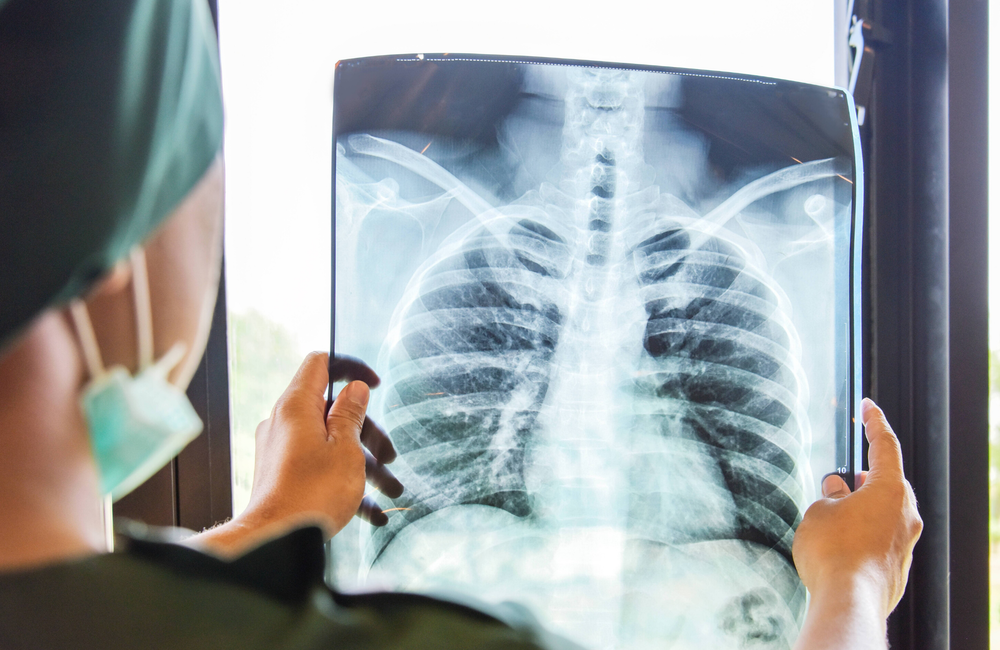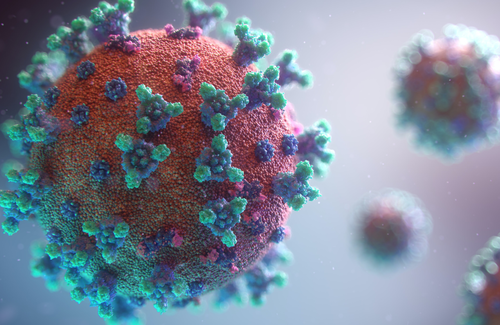
Two studies of COVID-19 cases published in recent days lead investigators to the cautious conclusion that people living with HIV are not at higher risk of death or severe illness, but one study shows a higher frequency of bacterial pneumonia leading to death in people living with HIV hospitalised with COVID-19.
New York
Researchers at New York University Grossman School of Medicine identified 21 people living with HIV hospitalised with COVID-19 at NYU Langone Health between 2 March and 23 April 2020. HIV status was ascertained from electronic medical records so this group represents all people with a recorded HIV-positive status admitted to the hospital. The researchers matched these patients with 42 HIV-negative coronavirus patients by admission date, age, body mass, gender, smoking and underlying health conditions associated with a higher risk of death from COVID-19.
HIV-positive people admitted to hospital with COVID-19 had a median age of 60, 90% were male, 23% were African American, 38% white, 33% had hypertension, 19% asthma or chronic obstructive pulmonary disease (COPD), 19% diabetes and 4% had coronary artery disease.
They had a median CD4 cell count of 298 cells prior to or at the time of admission, and six of 19 had a CD4 cell count below 200. Two out of 17 with recent viral load measurements had a detectable viral load. All people with HIV were on antiretroviral therapy.
Compared to HIV-negative people with COVID-19, people with HIV had higher total lymphocyte counts and higher C-reactive protein (CRP) levels at admission, and more often had abnormal chest x-rays (90% vs 64%), but none of these differences was statistically significant.
Similarly, although people with HIV stayed longer in hospital (6 vs 5 days), were more often admitted to the intensive care unit (28% vs 16%) and more often underwent mechanical ventilation (23% vs 11%), these differences were not statistically significant. Although the death rate was higher among people with HIV (28% vs 23%), this difference was not statistically significant.
Last measured CD4 count in people with HIV was not associated with the risk of death. People with HIV did not experience a higher rate of cardiovascular events or thrombosis. Three people with HIV and one HIV-negative person developed bacterial pneumonia in addition to pneumonia caused by SARS-CoV-2 (superimposed infection), confirmed by sputum culture. All four died despite antibiotic treatment. Half of those with HIV who died (3/6) had been diagnosed with bacterial pneumonia.
The investigators conclude that “HIV did not significantly impact clinical outcomes” but “we did detect trends suggesting that outcomes may be worse in HIV-positive patients.” They express concern about bacterial pneumonia as a predictor of mortality in HIV-positive patients and urge further research on this question.
The New York cases series has been made available as a pre-print and is undergoing peer review, so the study conclusions are preliminary.
Germany
Twelve HIV clinics in Germany reported on the outcomes of 33 people living with HIV diagnosed with COVID-19 between 11 March and 17 April 2020. The researchers don’t explain the testing protocol employed by the clinics that led to the identification of these patients, so it’s unclear if they represent all people with HIV diagnosed with SARS-CoV-2 receiving HIV care at those clinics, or just patients who were tested for SARS-CoV-2 on the initiative of physicians after coming into contact with the clinic.
Most patients (30) were male. All were on antiretroviral therapy and all except four had a CD4 count above 350.
Cough (78%) and fever (67%) were the most common symptoms. Fourteen people were admitted to hospital and six of these patients required intensive care. Six cases were critical, involving multi-organ failure or respiratory failure requiring ventilation, and three of the six died. Two cases were classed as severe (severe pneumonia). The remainder were classed as mild (no pneumonia or mild pneumonia).
Of the 14 admitted, ten have been discharged, one is still recovering, but three people have died.
“HIV did not significantly impact clinical outcomes” but “we did detect trends suggesting that outcomes may be worse in HIV-positive patients”
Of the three patients who died, one was aged 82 and had been living with HIV for 28 years. His last recorded viral load measurement prior to COVID-19 was 920 copies/ml. Another of the patients who died aged 55 years had an extremely low CD4 cell count (69 cells) and a very low CD4/CD8 ratio (0.06), indicating advanced immunosuppression despite 21 years of antiretroviral treatment. Only one of the three had underlying conditions previously associated with COVID-19 (hypertension, COPD and type 2 diabetes).
Overall, 60% of those diagnosed with COVID-19 in this case series had at least one co-morbidity, most commonly hypertension (10 people), COPD (6), and diabetes (4). The mean age was 48 years and only 6 out of 33 cases occurred in people aged 60 or over. One severe case occurred in a 37-year-old woman and a critical case in a 36-year-old man.
The German investigators conclude that this preliminary case series does not indicate a higher risk of severe illness or death from COVID-19 in people living with HIV.
The investigators also reported on the antiretroviral regimens prescribed to people diagnosed with COVID-19. Based on their chemical structure, several antiretroviral drugs might have activity against SARS-CoV-2, including HIV protease inhibitors and nucleotide analogues. The HIV protease inhibitor lopinavir/ritonavir is being tested in several clinical trials as a potential treatment for COVID-19, although preliminary studies have shown little or no benefit. The protease inhibitor darunavir, taken by four people in this case series, is not effective against SARS-CoV-2.
The nucleotide analogue tenofovir has also been proposed as a treatment for COVID-19 or a pre-exposure prophylaxis to prevent SARS CoV2 infection. It is being tested as pre-exposure prophylaxis against SARS-CoV2 infection in Spanish heath care workers. However, 22 out of 33 patients in this case series were taking tenofovir disoproxil (TDF) or tenofovir alafenamide (TAF), suggesting that it does not offer protection against infection.
Conclusion
Both research groups conclude that HIV infection does not raise the risk of severe COVID-19, but as doctors at London’s Chelsea and Westminster Hospital note in a letter published in The Lancet HIV, “appropriately powered and designed studies are needed to draw conclusions on the effect of COVID-19 in people with chronic diseases, including HIV infection.”
In particular, these studies do not shed light on whether COVID-19 causes severe immunosuppression that worsens outcomes or predisposes people to develop bacterial pneumonia.
The higher frequency of bacterial pneumonia in people living with HIV in the New York case series underlines the need for vigilance regarding bacterial pneumonia in people living with HIV with COVID-19 symptoms.
Karmen-Tuohy S et al. Outcomes among HIV-positive patients hospitalised with COVID-19. https://www.medrxiv.org/content/10.1101/2020.05.07.20094797v1
Härter G et al. COVID-19 in people living with human immunodeficiency virus: a case series of 33 patients. Infection, May 2020.
doi: 10.1007/s15010-020-01438-z
Jones R et al. Jones R et al. COVID-19 in patients with HIV. The Lancet HIV, May 2020.

